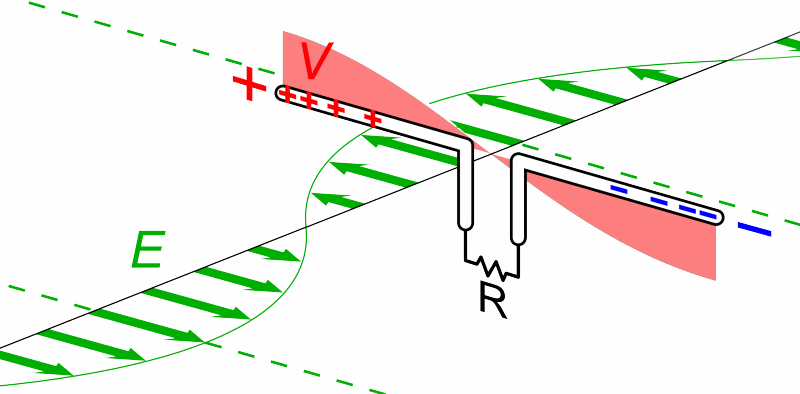Why do we need an antenna of size comparable to the wavelength for surface wave transmission?
Summary:
The fact that the length of an antenna is of similar size to the wavelength of light is a coincidence due to the similarity of the speed of light in air and the speed of light in the antenna (which are usually copper wires). For other waves, this may not be the case. Different guitar strings, for example, resonate at different frequencies despite being the same length. That's because they have different densities and tensions that change the speed of sound within them. So, the wavelength of a sound in air can have little to do with the length of string that produces it.
The Gory Details:
When an antenna receives an electromagnetic (EM) wave, the electric field of the wave pushes the electrons in the antenna back and forth. This happens regardless of the length or shape of the antenna. This sets up a standing wave of electric currents in the antenna. There are certain frequencies that are resonant in the antenna, which is when the efficiency of energy reception is highest. This frequency is determined by the length of the antenna and the speed of light in the antenna material. In this resonant condition, the electrons' motion and the incoming electric field are always in the same direction, so every wavelength of the EM wave builds up more motion and puts more energy into the antenna. If the frequency of the EM wave is not at the correct frequency, then sometimes the electrons' motion and the electric field will be in opposite directions, leading to a loss of energy in the antenna. Like pushing someone on a swing, each push has to be at the right time and in the right direction.

Animation comes from Wikipedia: https://en.wikipedia.org/wiki/Dipole_antenna. The red represents density of charges as they are pushed back and forth.
The condition for resonance in an antenna is that the wavelength of the standing wave is twice the length of the antenna (see the above animated diagram). $$\lambda_{SW} = 2L_{ant}$$ We can relate the wavelength to the frequency of oscillation by $$\lambda f = c$$ where $f$ is the frequency and $c$ is the speed of light in the antenna. So, the frequency of the EM signal that will be best received by the antenna is $$f=\frac{c}{\lambda_{SW}} = \frac{c}{2L_{ant}}$$ Since the speed of light in a vacuum or air is very close to the speed of light in an antenna (~80%), the length of the antenna will be close to the wavelength of the EM wave. In fact, most simple antennas have a length close to half the wavelength of the signal they are built to receive.
As an analogy, consider a basin half-full of water. You can tilt the basin to one side and the water rushes to the lower end. If you tilt the basin the other way, the water rushes to the other side. When you tilt the basin back and forth, most of the time the water just moves back and forth with little other effect. This is like the electric field of an EM wave that pushes the electrons in the antenna to one side. At a low frequency of tilting, the water just moves back and forth, settling at each end before the tilt reverses. At a high frequency, the water barely has a chance to move before the tilt reverses. But, if you tilt back and forth at just the right frequency, the sloshing of the water builds up and builds up until it splashes completely out of the basin. This is the resonant condition of the basin of water. You can imagine that longer basins have a lower frequency of resonance since it takes longer for the sloshing water to go from one end to the other. It's the same with an antenna: longer antennas have lower frequency resonance because it takes longer for the EM wave to bounce back and forth between the ends.
The following is a view of the charges in an antenna that shows the sloshing of electrons at resonance (the red shaded area; blue shows the magnitude of the velocity of the charges).

Animation comes from the same Wikipedia article: https://en.wikipedia.org/wiki/Dipole_antenna